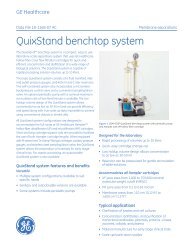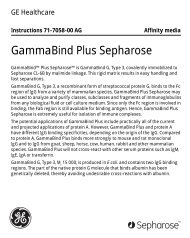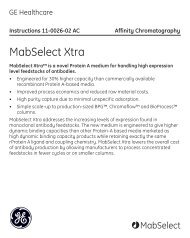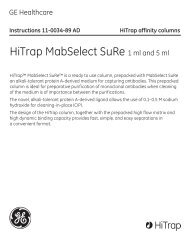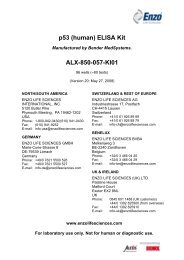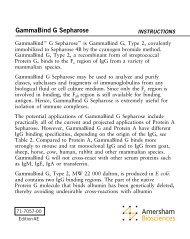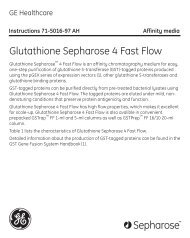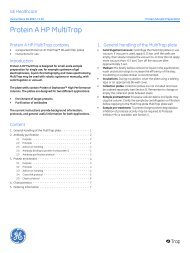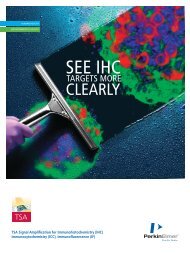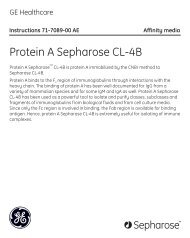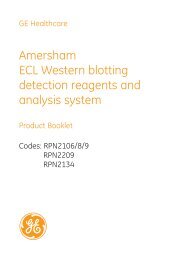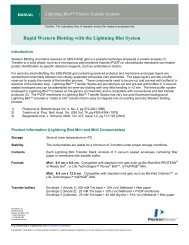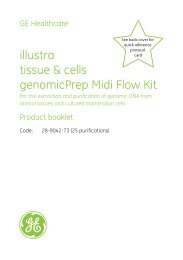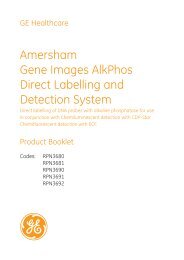Ni Sepharose™ excel, 100 ml and 500 ml HisTrap™ excel, 1 ml and ...
Ni Sepharose™ excel, 100 ml and 500 ml HisTrap™ excel, 1 ml and ...
Ni Sepharose™ excel, 100 ml and 500 ml HisTrap™ excel, 1 ml and ...
Create successful ePaper yourself
Turn your PDF publications into a flip-book with our unique Google optimized e-Paper software.
Issue<br />
No histidine-tagged<br />
protein in the purified<br />
fractions (cont.)<br />
The eluted protein is<br />
not sufficiently pure<br />
(multiple b<strong>and</strong>s on<br />
SDS polyacrylamide<br />
gel)<br />
Possible cause<br />
Suggested action<br />
• Protein eluted during wash.<br />
Ensure that the concentration of imidazole is not<br />
too high.<br />
• Elution conditions are too mild (histidine-tagged<br />
protein still bound).<br />
Elute with increased imidazole concentration.<br />
• Protein has precipitated in the column.<br />
Decrease amount of sample, or decrease protein<br />
concentration by eluting with linear imidazole<br />
gradient instead of imidazole steps. Try detergents<br />
or change NaCl concentration.<br />
• Nonspecific hydrophobic, ionic or other<br />
interaction prevents elution.<br />
Add for example a nonionic detergent to the<br />
elution buffer or change the NaCl concentration.<br />
• Partial degradation of tagged protein by<br />
proteases.<br />
Add protease inhibitors.<br />
• Contaminants have high affinity for nickel ions.<br />
Elute with a stepwise or linear imidazole gradient<br />
to determine optimal imidazole concentrations to<br />
use for wash. Increase the wash length before<br />
elution <strong>and</strong>/or the imidazole concentration during<br />
wash. A shallow imidazole gradient (20 column<br />
volumes or more) may separate proteins with<br />
similar binding strengths. If optimized conditions<br />
do not remove contaminants, adding a second<br />
chromatography step such as gel filtration may<br />
be necessary.<br />
• Contaminants are associated with the tagged<br />
protein.<br />
Add detergent or glycerol to the wash buffer to<br />
disrupt non-specific interactions.<br />
• Electrostatic interactions of contaminants with<br />
the tagged protein or the chromatography<br />
medium.<br />
Increase the sodium chloride concentration to<br />
1 to 2 M in buffers.<br />
16 29-0138-67 AC



